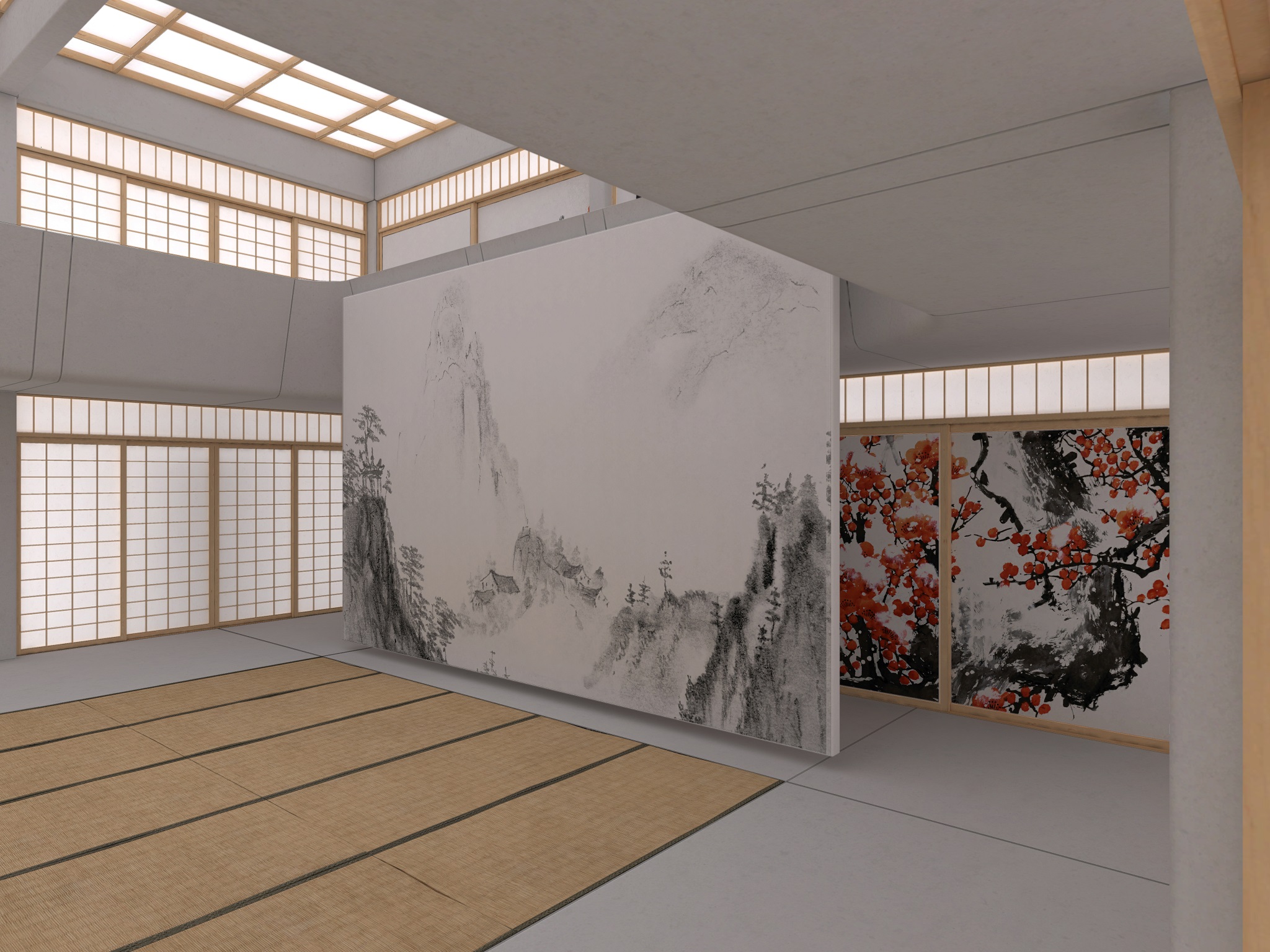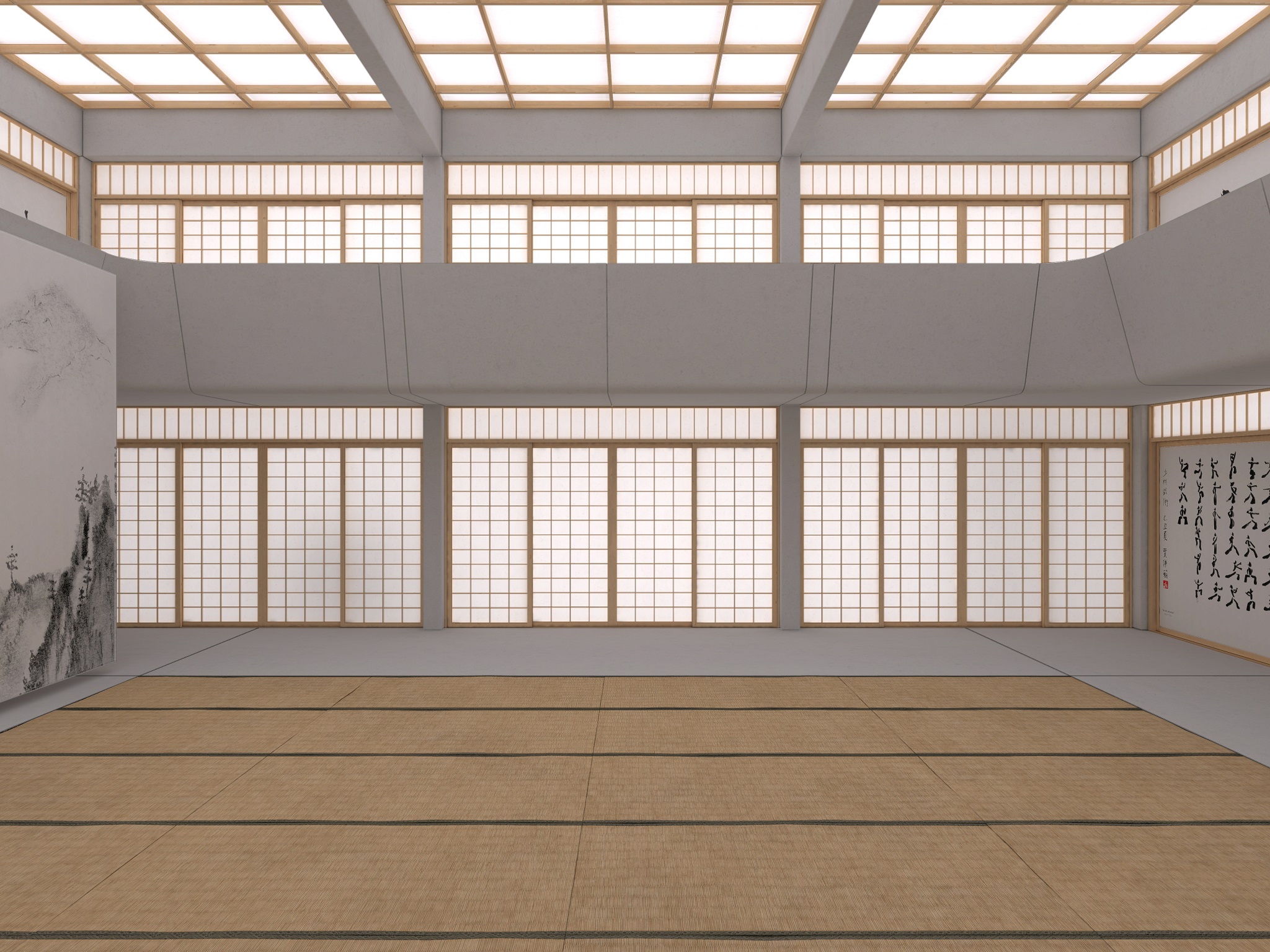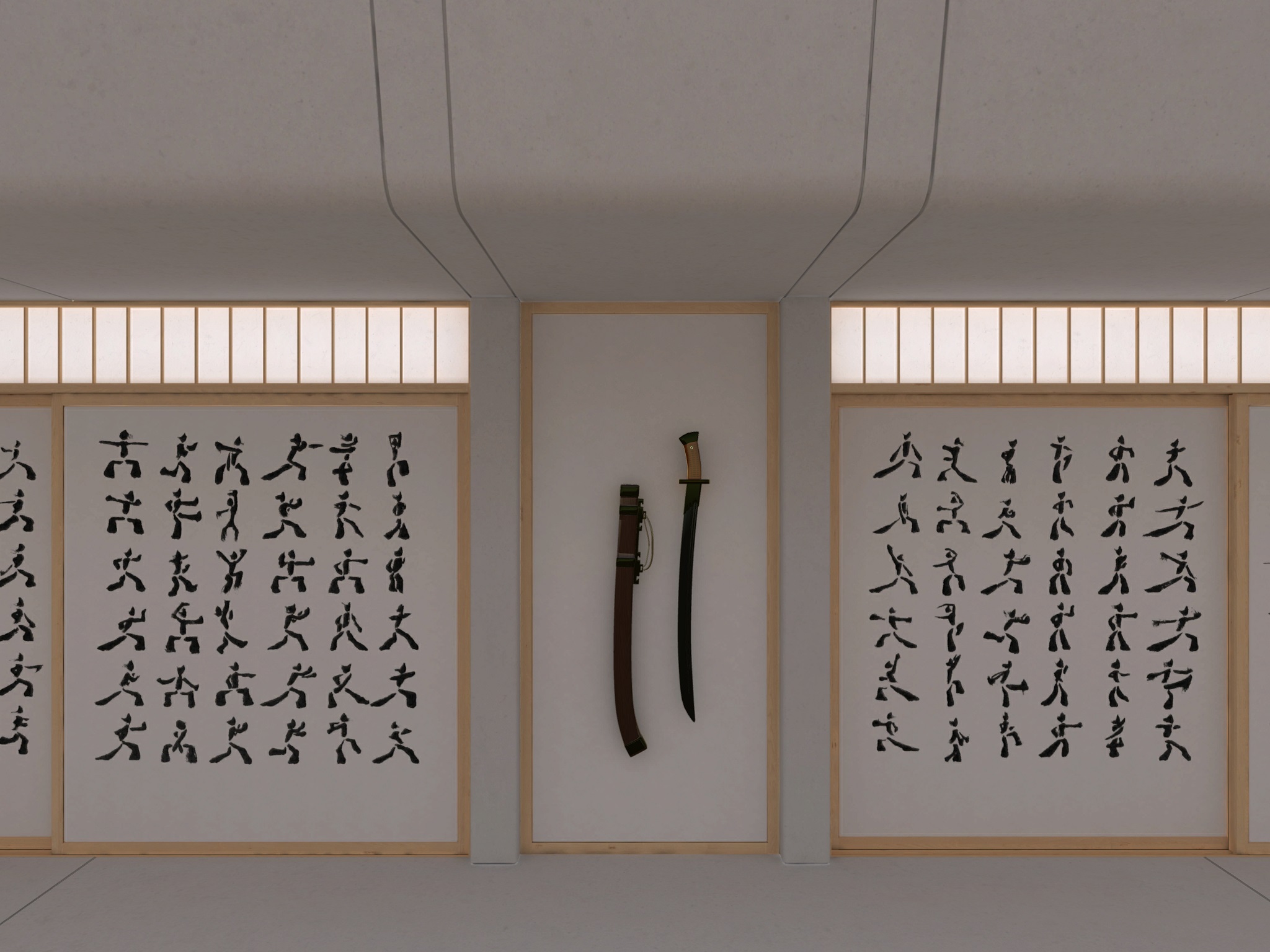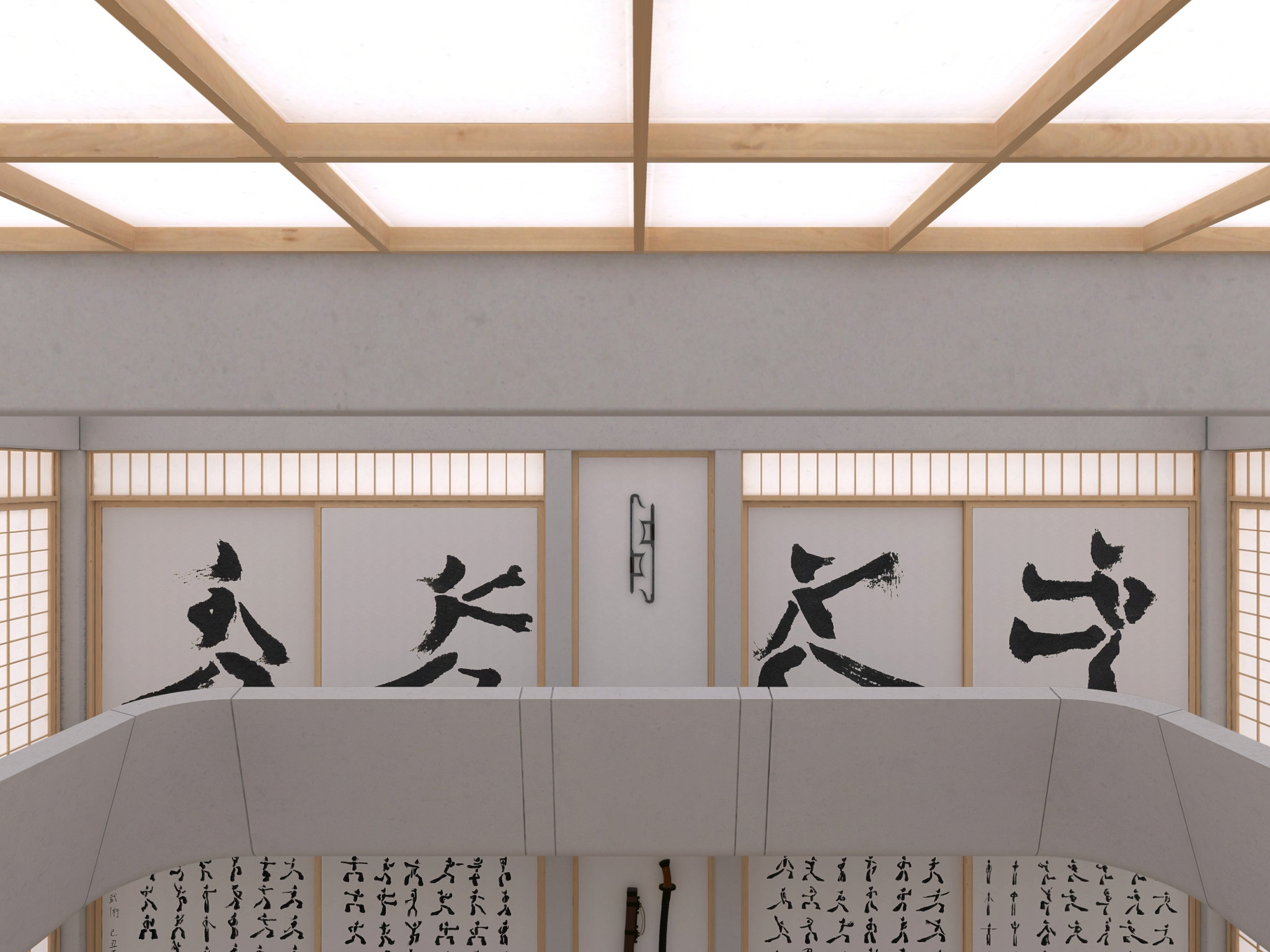






I Know Kung Fu VR was created as a technology demo for HoloCap (www.holocap.com), a system for scanning and presenting humans in Virtual Reality in real-time using a low cost depth camera. The inspiration for the design was the dojo from the Matrix movie with a dash of modern architectural design and a selection of Chinese Wu-Shu related art.

The space has been constructed using three major materials, concrete, wood and paper. The floor and structural parts of the architecture are modular concrete elements including the mezzanine. All doors and window panels are made out of wood and rice paper, with typical Shoji sliding doors on the long sides of the space. Tatami mats cover the center of the floor.

I used VR in the design process to ensure the space felt comfortable to be in in. This included adjusting the overal size of the room and the lighting which was kept entirely diffuse to match lighting on the captured characters. A feeling of mystery was created by adding elements that cast shadows on the Shoji doors as well as hinting at what is upstairs without allowing the users to go there.

A large painting of a Wushu manual by artist Jia Chuan Xin (Albert Gea) cover the four large sliding doors at the back of the room. An ancient Chinese sword hangs on the wall, important visual storytelling elements in the space.

While the users are not intended to move outside of a small rectangle in the middle of the Tatami floor, the upper area have artworks that can be partly seen from below adding mystery and a feeling that someone could be watching you from above. A future version of the space could potentially allow viewers in VR to stand on the mezzanine and look down on the Wushu training space below.

The team that made the Holocap demo possible were scanned with the idea to create a unique credit screen. Here is 3D artist Solveig Stake whom assisted in transforming my V-Ray based 3d Studio Max model into a real-time Unity model with baked textures and lighting.